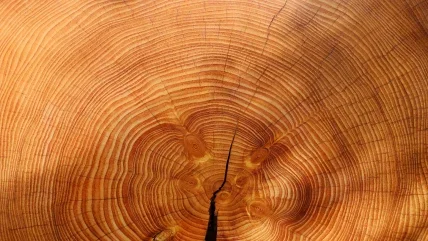
"The emergent properties of metamaterials" is a term that is associated with exponential growth in metamaterials research in recent years. A metamaterial is a material with properties resulting from its structure, rather than solely from its composition.
The recent surge in interest is in part because metamaterials, which can be rationally designed to exhibit highly varied properties and behaviours, can now also be manufactured more easily than ever before. Due to the inherent complexity of their architectures, they tend to be additively manufactured. What this means is that unique macro-scale emergent properties can be built up from lower length-scale materials and their interactions.
For example, epoxy polymer is a low stiffness and relatively ductile material at room temperature, which if reinforced using high stiffness continuous carbon fibres, will become signicantly stiffer. In addition, the reinforced epoxy is now also a brittle material and will have new constraints on how it fails and fractures because of the presence of the embedded carbon fibres.
What are the implications for wood and wood-based materials? Wood is amongst the more complex common engineering materials. It never displays precise regularity in its geometry or properties at the micro-scale, and wood fibres vary geometrically along their lengths, as do their properties. This is not only true from one part of a tree to the next, but also in different directions within a single sawn piece.
In addition to this, factors such as growth rates, tree species, age, and environmental conditions will affect the emergent properties of wood, a hierarchical and anisotropic natural fibre reinforced cellular solid composite, essentially a natural metamaterial! If wood is already a metamaterial, a material where the properties are a function of the material architecture rather than solely a function of composition, how do we go about designing ‘new’ metamaterial structures from wood and wood-based materials?
Wood itself, as a sawn mass, is not something that can be additively manufactured. The subtractive manufacture of wood is nevertheless entirely possible; and can be used to control wood behaviour and properties at a macroscale. Wooden metamaterials manufactured in this way are similar in principle to 2D metamaterial extrusions (sometimes termed 2.5D metamaterials), rather like honeycomb structures with different in-plane and out-of-plane properties.
Some recently published papers on the topic discuss controllable and tuneable stiffness properties in wood plates by the judicious placement of arrays of oval holes across the structure. These holes are cut out from the wooden sheet.
Other papers have focused on using wood as the physical actuators for 3D-printed biocomposite ‘meta-shells’ – making the most of both original sawn woods as stiffstructures controlling motion, and cellulose short-bre biocomposites, which can be additively manufactured into complex geometrical structures. In the image below, a -at panel, manufactured additively from 3D-printed biocomposite metamaterial patterning (MMP) and integrated wood actuators, has been controllably dried to form a lightweight, self-shaped double-curved shell structure.
At the microstructural level, researchers are delignifying wood microstructures to reuse them as templates for the manufacture of unique metamaterial architectures, mimicking the cellular structure of wood and taking advantage of its natural anisotropy. Since there is a plethora of available architectures in nature, doing so unlocks almost limitless possibilities for the manufacture of novel anisotropic aperiodic metamaterials, where the functionality of the structure itself has already been proven by the host tree from where the template is taken.
Since wood is at its core, a naturally emergent metamaterial, the use of wood and wood-based materials to create new metamaterials is essentially a re-emergence of wood in terms of its structure, properties and behaviour. Wood is a viable base material to design with and has the added advantages of being both sustainable and versatile.





